With the arrival of warm weather, take a walk down to Taipei's Riverside Park (
One version of history says Italian traveler Marco Polo brought a three-dimensional kite from China back to Europe in the 13th century, and from that point the kite followed two distinct paths of development.
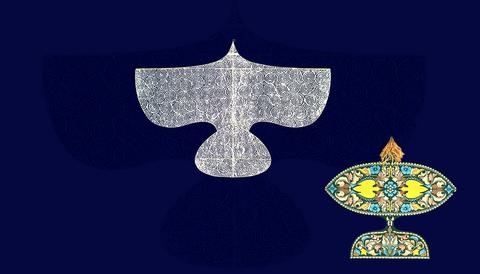
Divorced from the constraints of the pastime's Asian traditions, the kite in the West underwent major transformations over the centuries and has even evolved into the extreme sports of paragliding and hand gliding.
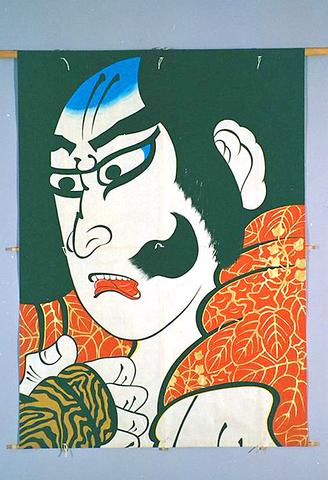
PHOTO COURTESY OF BUTEO HUANG
Western kites tend to apply modern materials, such as nylon fabric and carbon-fiber tubes for both the flat and three-dimensional varieties of kite. In contrast, kites in Asia have emphasized a traditional appearance, while exploring the convergence of art and modern technology in the design. Asian kite designers have largely avoided hectic sport incarnations of kite flying, for fear that it detracts from the human aspect of this family-oriented pastime. Furthermore, making a kite by hand is an enjoyable modern family leisure time activity.
Younger generations, however, have tended to favor the more intense experience of flying Western kites.

PHOTO COURTESY OF BUTEO HUANG
Asian kite makers for hundreds of years have mostly used the favored regional building material, bamboo, to assemble kites. The reasons are obvious. Bamboo is widely used in the construction of buildings and other structures and can be found almost anywhere in the countryside.
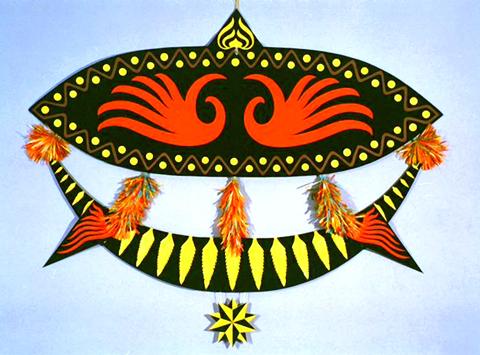
PHOTO: COURTESY OF BUTEO HUANG
More importantly, bamboo is highly flexible and extremely strong, which makes it ideal for creating practically any shape.
The shape and design of artistic kites vary between countries in Asia, but all retain a human touch, as opposed to mass-produced high-tech products that predominate in the West. Asian kites also typically feature pictures of animals or humans, whereas geometric patterns dominate in Western kites.
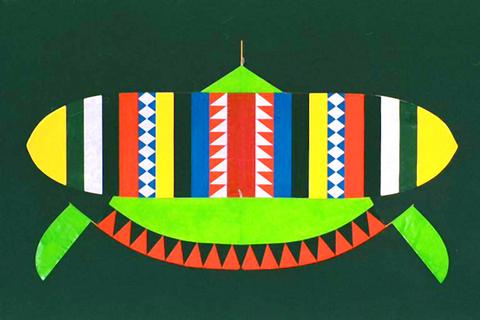
PHOTO COURTESY OF BUTEO HUANG
Kite designs throughout Asia have typically been hand-drawn. The Japanese, for example, apply bright Ukiyoe (
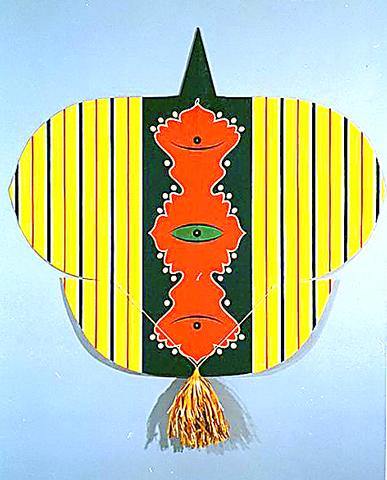
PHOTO COURTESY OF BUTEO HUANG
Some prominent Japanese kite makers favor redwood, instead of bamboo, for their hand-made kite frames and may produce only one or two kinds of kites with exactly the same hand-painted design (never in printed versions) in their lives. Kite makers would keep their trade secrets within the family, passing their skills down to subsequent generations.
Kite flying in Japan is often a team effort with large groups flying a huge kite. There are also kite-flying contests in which employees from a business form a team.
China has long been recognized as the kite's place of origin. Designs have included domestic animals and legendary monsters such as gigantic centipedes, dragons and phoenixes. Records for the length of kites are broken almost every year at the international kite festival in Beijing.
The kite making tradition is so dear to the Chinese that one family, called the Ha Family (
Chinese kite makers also made extensive use of silk, instead of cotton paper, in their kites. Consequently, the kite's often unsightly frame came into full view once in the air.
More recently, Chinese kite makers have turned their attention to improving the appearance of their kites by painting more varieties of pictures and using themes from widely-known Chinese idioms. Scant attention has been paid, however, to producing kites with unconventional shapes or improving the structure of kites. As a result, traditional Chinese kites lack the diversity of modern kites.
The best kite-designers in China are mostly in their old age and have not passed on their trade. The situation is somewhat similar in Taiwan where young people prefer to purchase mass-produced "junk kite" -- the simple and cheap triangle-shaped (
One kite maker who is keeping the tradition of artistic kites alive in Taiwan is Buteo Huang (
One of the most unique designs of kites in Asia is the traditional Korean rectangular wind-hole kite or yeon (
In Southeast Asia, an ancient and popular and design is called the moon kite (月箏), which developed from the original Chinese skinny-sparrow (瘦燕) and fat-sparrow (肥燕) kites. Thailand and Malaysia each have several traditional kites. Thailand's owl- and cobra-shaped kites are highly regarded by the international kite-flying community, while Malaysian kites are often equipped with humming instruments (弓鳴器) and contain paintings of local flowers and grass. Malaysian Airlines uses the traditional moon kite as its company logo and Singapore's Changi International Airport used kites for decoration when its new terminal opened in 1990.
Kite designers in the Philippines, Malaysia and Indonesia also make extensive use of wax paper for kite fabric and use wax-dying techniques to beautify their kites.

June 2 to June 8 Taiwan’s woodcutters believe that if they see even one speck of red in their cooked rice, no matter how small, an accident is going to happen. Peng Chin-tian (彭錦田) swears that this has proven to be true at every stop during his decades-long career in the logging industry. Along with mining, timber harvesting was once considered the most dangerous profession in Taiwan. Not only were mishaps common during all stages of processing, it was difficult to transport the injured to get medical treatment. Many died during the arduous journey. Peng recounts some of his accidents in

“Why does Taiwan identity decline?”a group of researchers lead by University of Nevada political scientist Austin Wang (王宏恩) asked in a recent paper. After all, it is not difficult to explain the rise in Taiwanese identity after the early 1990s. But no model predicted its decline during the 2016-2018 period, they say. After testing various alternative explanations, Wang et al argue that the fall-off in Taiwanese identity during that period is related to voter hedging based on the performance of the Democratic Progressive Party (DPP). Since the DPP is perceived as the guardian of Taiwan identity, when it performs well,

The Taiwan People’s Party (TPP) on May 18 held a rally in Taichung to mark the anniversary of President William Lai’s (賴清德) inauguration on May 20. The title of the rally could be loosely translated to “May 18 recall fraudulent goods” (518退貨ㄌㄨㄚˋ!). Unlike in English, where the terms are the same, “recall” (退貨) in this context refers to product recalls due to damaged, defective or fraudulent merchandise, not the political recalls (罷免) currently dominating the headlines. I attended the rally to determine if the impression was correct that the TPP under party Chairman Huang Kuo-Chang (黃國昌) had little of a

At Computex 2025, Nvidia CEO Jensen Huang (黃仁勳) urged the government to subsidize AI. “All schools in Taiwan must integrate AI into their curricula,” he declared. A few months earlier, he said, “If I were a student today, I’d immediately start using tools like ChatGPT, Gemini Pro and Grok to learn, write and accelerate my thinking.” Huang sees the AI-bullet train leaving the station. And as one of its drivers, he’s worried about youth not getting on board — bad for their careers, and bad for his workforce. As a semiconductor supply-chain powerhouse and AI hub wannabe, Taiwan is seeing